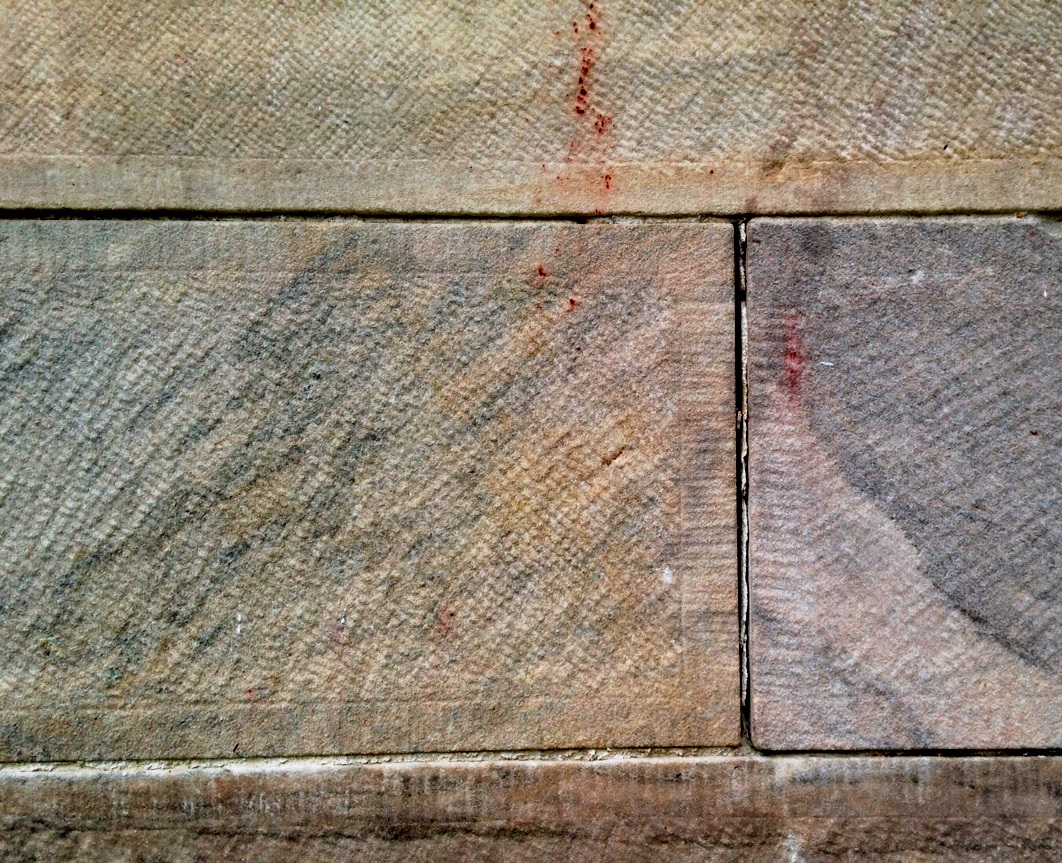
Foundation Stones showing stippling, Second Meetinghouse, Church Family, Mount Lebanon, NY.
Sometimes the brutish hard work it took to construct the built environment we have come to admire in Shaker villages can be conveyed in a single object. Such an object is the crandall hammer in Shaker Museum Mount Lebanon’s collection. A crandall is a tool used by stone cutters to give stone a particular look […]

Crandall Hammer, Church Family, Mount Lebanon, NY, ca. 1825, Shaker Museum | Mount Lebanonr: 1950.1483.1
Sometimes the brutish hard work it took to construct the built environment we have come to admire in Shaker villages can be conveyed in a single object. Such an object is the crandall hammer in Shaker Museum Mount Lebanon’s collection. A crandall is a tool used by stone cutters to give stone a particular look and finish. That finish, a relatively even stippling, was usually achieved with one of two tools, a bush hammer or a crandall. A bush hammer looks something like a meat tenderizer with a face several inches square, cut with a grid of sharp points. The crandall is similar but the hammer head is made from a gathering of individual pointed chisels that are wedged together to make the face of the hammer. The crandall in the museum’s collection is unusual in that the pointed chisels are gathered into a round-shaped head rather than the more usual elongated ax-like head made from stacking the chisels in a line. The museum’s crandall originated at the Church Family at Mount Lebanon and shows all the characteristics of being made by a blacksmith. It’s about twenty-two inches long. It’s face is three-and-one-half inches in diameter and the chisels are about seven inches long. One advantage of a crandall over the bush hammer is that the chisels can be removed, sharpened, and replaced whereas re-cutting the face of a bush hammer is difficult.

Foundation Stones showing stippling, Second Meetinghouse, Church Family, Mount Lebanon, NY.
There are a number of examples of the Shakers’ use of dressed stone at Mount Lebanon. The most obvious and probably most ambitious one is the marble foundation of the Second Meetinghouse. In 1822 when the Shakers were planning and beginning to prepare materials for the construction of the new meetinghouse, they recorded in a journal, “we were favored with a man qualified to cut and prepare stone, & the foundation was laid of cut stone.” To accomplish this “white stone” (marble) was obtained in Berkshire County and hauled over the mountain by ox team. Once at Mount Lebanon, the stone was sawn into properly sized blocks at the Shakers’ water-powered stone saw. To finish the exterior surface of the stone, it face was worked with a crandall or a bush hammer to give it an even textured appearance. The stippling on each block of marble was framed with a one-inch margin chiseled around its perimeter.
The Second Meetinghouse’s marble foundation rises three feet above the ground and its facing stones cover nearly one-thousand square feet. All of that was hand hammered to achieve the desired finish. An expert on stone cutting could offer an opinion on whether this is crandall or bush hammer work.